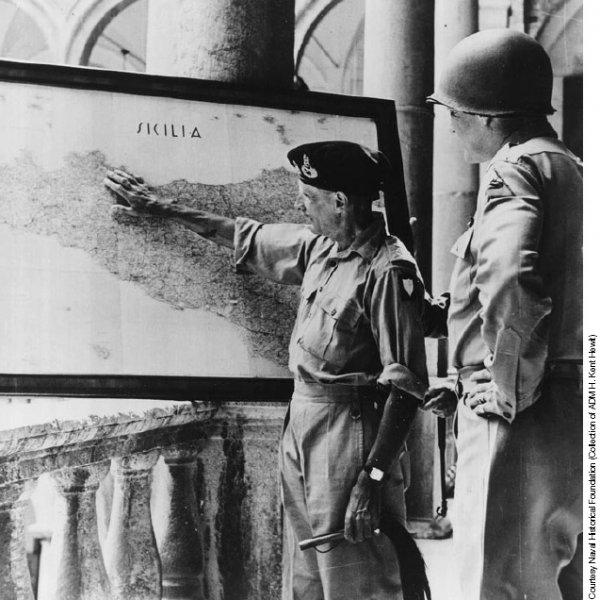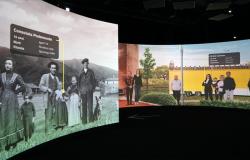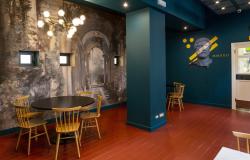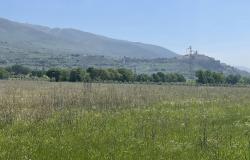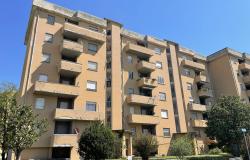The Allied Forces landed in Sicily in July 1943 in a campaign that changed the course of World War II. Carol King reports on the operation and how those who lost their lives are remembered today. It is 70 years since British, American and Commonwealth troops were issued with a copy of the ‘Soldier’s Guide to Sicily’. With a foreword written by the US Army’s General Dwight D. Eisenhower, the booklet was produced to help the Allies prepare for Operation Husky: the invasion of Sicily. Eisenhower was the Commander in Chief for the operation. He wrote: “The successful conclusion of these operations will NOT only strike closer to the heart of the Axis, but also will remove the last threat to the free sea lanes of the Mediterranean.”
The guide warns troops about the hot, dry weather of the sirocco they were likely to encounter – and rightly so: the fierce heat combined with swampy conditions on parts of the island meant some combatants contract malaria. The book also contains advice with descriptions of the island, pictures of some towns and makes remarks about its people which many would consider highly questionable today. For example, it says: “The bulk of the inhabitants are Roman Catholic and much addicted to Saints’ Days, which take on a festival aspect. They are none the less evidence of a devout faith... Morals are superficially very rigid, being based on the Catholic religion and Spanish etiquette of Bourbon times; they are, in actual fact, of a very low standard, particularly in the agricultural areas." “The Sicilian is still, however, well known for his extreme jealousy in so far as his womenfolk are concerned, and in a crisis still resorts to a dagger.”
In fact, Sicily was under Nazi Occupation and the Italians put up little resistance. They soon made peace and joined forces with the Allies. Before the landings, Sicily was the worst hit region in Italy. An air and naval blockade meant that food was rationed and a black market flourished. Throughout the spring of 1943, the Allies bombed Sicily. Air-shelters were scarce, so locals sheltered in stables, caves, grottoes – anywhere they could: in Ortigia, they took to the tunnel complex under the cathedral and in Catania, they hid in the tunnels of the Roman amphitheatre.

From May 1943, American and British forces attacked the small islands of Pantelleria and Lampedusa off the Sicilian south coast. The bombardments caused little damage to the military installations hidden underground but demoralised the islanders. Pantelleria surrendered on 11 June before the Allies had set foot on the island and Lampedusa followed suit the next day. The Allies attack on Sicily took the Axis powers by surprise because they had been lead to believe that Greece and Sardinia were the targets for any potential attack. Operation Husky’s landing force consisted of seven divisions – it was bigger than that employed on D-Day in 1944, which had five divisions. The invasion started on the night of 9 July 1943 when 1,600 British and 3,400 American paratroopers descended on to the island in what was the first mass parachute drop at night. The drop was not entirely successful because strong winds reaching up to gale force 7 blew most of the gliders off course. Some crashed on land and others were forced into the sea. Many men perished. A subsequent airdrop on 13 July also incurred losses because it was met by Italian anti-aircraft fire and misdirected friendly fire from Allied ships. The invasion was also the largest amphibious operation of World War II. Some 2,700 ships and landing craft arrived in Sicily on the morning of 10 July. Starting at dawn, more than 160,000 men landed along with hundreds of vehicles on the 105-mile-long stretch of coast between the Gulf of Gela and the Gulf of Noto. Some did not make it, as ships carrying troops were torpedoed in the Mediterranean. The operation ended only five weeks later, with the occupation of Messina on the northeast coast on 17 August. General Sir Bernard ‘Monty’ Montgomery led the 115,00 men of the British and Commonwealth forces, who landed in the southeast corner of the island between Pachino and Siracusa. Lieutenant General George S Patton commanded 66,000 troops and the Seventh US Army landed in the Gulf of Gela. However, the support services meant that the total number of Allied soldiers involved in the campaign was 478,000, who were aided by 2,510 aircraft and 2,590 ships. The Germans sought reinforcements and Adolph Hitler ordered that two regiments fly from France to Sicily. However, the Allies managed to hold the upper hand. The Germans began to retreat on 10 August and left Sicily a week later, crossing the Strait of Messina to Calabria.  Concrete pillboxes and bunkers used by the Italians and Germans to defend themselves are still visible along roads on the island, particularly in the coastal areas. The soldiers who manned them were ill equipped, and many of the Italians were old and poorly trained. Nevertheless, the conflict saw some bloody battles, particularly in the east of the island at Primosole Bridge on the River Simeto south of Catania and Sferro in Paternò, as well as in the west at Agira and Troina in Enna. Some of the Sicilians captured by the Allies were sent to camps in North Africa. However, many were soon released on their word of honour that they would not take up arms against the Allies. During the campaign, the Allies adhered to the principles of the Geneva Convention. However, there were tragic exceptions: the most well known is the Biscari Massacre. In fact there were three massacres that took place at the Biscari (now Acate) airfield in Ragusa on 13 and 14 July, when an American captain and a sergeant ordered the shooting of at least 73 Italian and German prisoners of war and seven Sicilian farmers in cold blood – the exact number of the casualties remains uncertain. The soldiers were court martialled and found guilty of murder but only the sergeant was sentenced to life imprisonment, although his sentence was reduced later. Among the civilian population, most people were relieved that the Allied landing signified the end of aerial bombing, and the deaths and terror that brought with it. Allies even fraternised with the locals, who supplied services including haircuts. There were clashes between the Sicilians and the retreating Germans, usually over food and transport. Some ended in fighting and even death. The worst incident was the Castiglione Massacre at Castiglione di Sicilia in Catania, where German soldiers from the Panzer-Division Hermann Göring killed 16 civilians and wounded 20 others on 12 August. Some 200 or more locals, the elderly and children among them, were taken hostage for two days, while the village was ransacked and burned. It is thought the massacre occurred because of the theft of a German truck carrying food or the murder of five German soldiers by local farmers, however, the details remain unclear. What remains certain is that despite its brevity, Operation Husky resulted in the loss of life on all sides of many nationalities: Italians, Germans, Poles, British, South Africans, Indians, Canadians, New Zealanders and Australians. Their sacrifice was not in vain, because the campaign marked a turning point in the war and led to the demise of Benito Mussolini. An armistice between the Allies and Italy was signed at Cassabile in Siracusa on 3 September. Combatants who died during Operation Husky are buried at various cemeteries across the island. Some 496 Canadian soldiers are buried at a war cemetery in Agira in Enna. Some 1,059 members of the British and Commonwealth forces are buried at Siracusa war cemetery and 2,142 at Catania war cemetery. Some 4,561 Germans are buried in Motta Sant’Anastasia war cemetery in Catania. The bodies of the Italians who died were either returned to their hometowns or buried at the Sacrario Militare di Cristo Re (Military Shrine of Christ the King) in Messina. The remains of the Americans who died were returned to the USA or buried at the American war cemetery near Rome. Survivors of the campaign will mark the 70th anniversary this year with various ceremonies across the island.
Concrete pillboxes and bunkers used by the Italians and Germans to defend themselves are still visible along roads on the island, particularly in the coastal areas. The soldiers who manned them were ill equipped, and many of the Italians were old and poorly trained. Nevertheless, the conflict saw some bloody battles, particularly in the east of the island at Primosole Bridge on the River Simeto south of Catania and Sferro in Paternò, as well as in the west at Agira and Troina in Enna. Some of the Sicilians captured by the Allies were sent to camps in North Africa. However, many were soon released on their word of honour that they would not take up arms against the Allies. During the campaign, the Allies adhered to the principles of the Geneva Convention. However, there were tragic exceptions: the most well known is the Biscari Massacre. In fact there were three massacres that took place at the Biscari (now Acate) airfield in Ragusa on 13 and 14 July, when an American captain and a sergeant ordered the shooting of at least 73 Italian and German prisoners of war and seven Sicilian farmers in cold blood – the exact number of the casualties remains uncertain. The soldiers were court martialled and found guilty of murder but only the sergeant was sentenced to life imprisonment, although his sentence was reduced later. Among the civilian population, most people were relieved that the Allied landing signified the end of aerial bombing, and the deaths and terror that brought with it. Allies even fraternised with the locals, who supplied services including haircuts. There were clashes between the Sicilians and the retreating Germans, usually over food and transport. Some ended in fighting and even death. The worst incident was the Castiglione Massacre at Castiglione di Sicilia in Catania, where German soldiers from the Panzer-Division Hermann Göring killed 16 civilians and wounded 20 others on 12 August. Some 200 or more locals, the elderly and children among them, were taken hostage for two days, while the village was ransacked and burned. It is thought the massacre occurred because of the theft of a German truck carrying food or the murder of five German soldiers by local farmers, however, the details remain unclear. What remains certain is that despite its brevity, Operation Husky resulted in the loss of life on all sides of many nationalities: Italians, Germans, Poles, British, South Africans, Indians, Canadians, New Zealanders and Australians. Their sacrifice was not in vain, because the campaign marked a turning point in the war and led to the demise of Benito Mussolini. An armistice between the Allies and Italy was signed at Cassabile in Siracusa on 3 September. Combatants who died during Operation Husky are buried at various cemeteries across the island. Some 496 Canadian soldiers are buried at a war cemetery in Agira in Enna. Some 1,059 members of the British and Commonwealth forces are buried at Siracusa war cemetery and 2,142 at Catania war cemetery. Some 4,561 Germans are buried in Motta Sant’Anastasia war cemetery in Catania. The bodies of the Italians who died were either returned to their hometowns or buried at the Sacrario Militare di Cristo Re (Military Shrine of Christ the King) in Messina. The remains of the Americans who died were returned to the USA or buried at the American war cemetery near Rome. Survivors of the campaign will mark the 70th anniversary this year with various ceremonies across the island. 
Sicily is host to various museums that mark World War II. The largest and most comprehensive is the Museo dello Sbarco (Allied Landing Museum) in Catania. The museum is well worth a visit as it catalogues Operation Husky, its battles and life after the campaign with the aid of multimedia devices and original footage. The most moving monument is a room dedicated to the fallen on all sides, where the names of all of those who died during the operation are read out in their native language via a continuous loop. Another museum dedicated to the war is the Museo della Memoria (Museum of Memory) in Modica, Ragusa. Run by two locals, it contains uniforms, documents, arms and photographs that form a private collection. However, many towns across the island have small museums dedicated to the landing with memorabilia relating to events that occurred locally.
